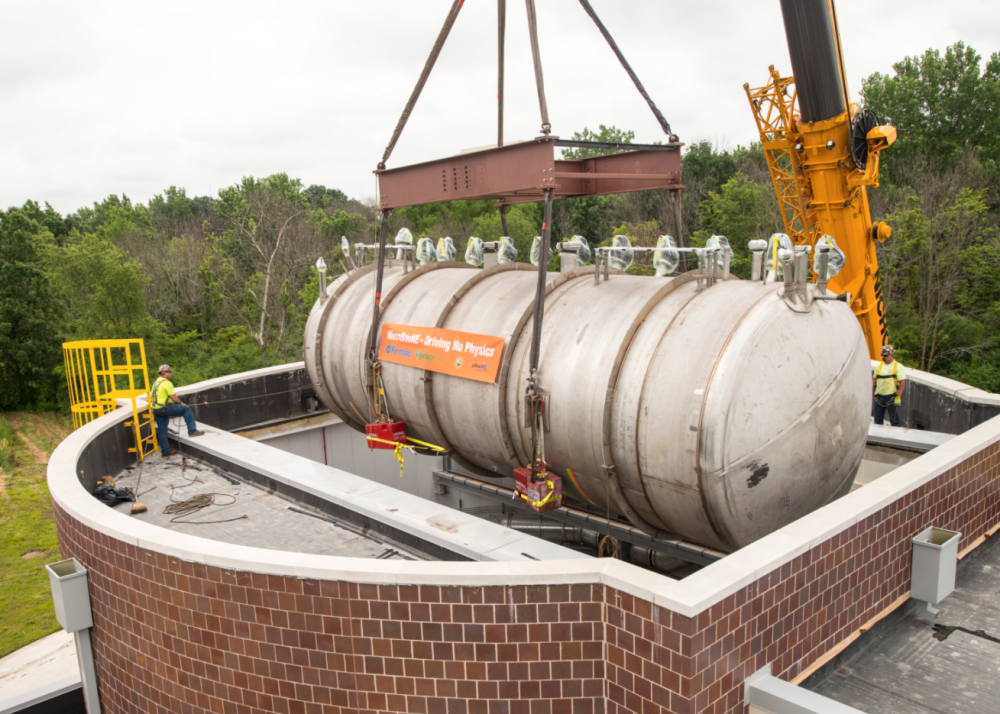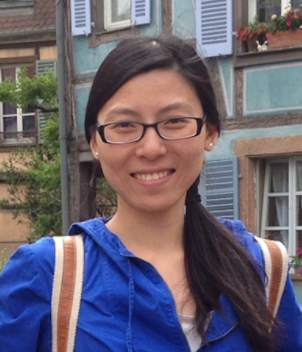
MicroBooNE Sheds Light on Neutrino Puzzle

UC Santa Barbara assistant professor Xiao Luo has big love for the tiny neutrino, a common, yet very elusive and still-mysterious subatomic particle.
Neutrinos are the most abundant particle with mass in our universe — though they rarely interact with other matter. Their elusive nature makes them very challenging to detect. Neutrinos are also shapeshifters, oscillating as they travel between three flavors (electron, muon, and tau) predicted by the Standard Model of particle physics. Studying these oscillations can provide answers to fundamental questions in physics, such as understanding why our universe has more matter than antimatter. “It’s rewarding to be a neutrino experimentalist because they offer many opportunities to learn about our universe, and it’s likely that whatever we find by studying them will lead to new discoveries,” Luo said.
So it’s no surprise that she jumped at the chance to join the MicroBooNE (Micro Booster Neutrino Experiment), a 170-ton neutrino detector roughly the size of a school bus that has been in operation at the Fermi National Accelerator Laboratory since 2015. Its job? To shed light on some interesting data gathered two decades earlier by the detector’s predecessors.
“MicroBooNE’s main goal is to resolve previous experimental anomalies that have haunted particle physicists for decades,” said Luo, the principal investigator of the UCSB neutrino group. Experiments conducted around the turn of the century — first at the Liquid Scintillator Neutrino Detector (LSND) at the U.S. Department of Energy’s Los Alamos National Laboratory, and then at the Mini Booster Neutrino Experiment (MiniBooNE) at Fermilab in Chicago — saw more neutrino interactions than calculations predicted, leading the scientists to wonder what could be causing this unexpected activity.
A theory of a fourth, “sterile” neutrino emerged and became a popular candidate to explain these odd results. Even more elusive than the three known flavors, this new neutrino would interact only through gravity. Its presence could account for the anomalous results produced at LSND and MiniBooNE. If proven, sterile neutrinos would also present a challenge to the Standard Model, the prevailing theory of how the universe works.
Electrons vs Photons
Neutrinos can’t be “seen” directly; rather, detection relies on observing what particles emerge when a neutrino hits an atom inside the detector. The MiniBooNE detector had a particular limitation: It was unable to tell the difference between electrons and photons (particles of light) close to where the neutrino interacted. This ambiguity painted a muddled picture of what particles were emerging from collisions.
If MiniBooNE were truly seeing more electrons than predicted, it would indicate extra electron neutrinos causing the interactions. That would mean something unexpected was happening in the oscillations that researchers hadn’t accounted for: the so-called sterile neutrinos. But if photons were causing the excess, the anomaly would be explained by either a mismodeled background process or new physics not directly related to sterile neutrinos.
MicroBooNE overcomes MiniBooNE’s limitations with its state-of-the-art technology. It uses special light sensors and more than 8,000 painstakingly attached wires to capture particle tracks. It’s housed in a 40-foot-long cylindrical container filled with 170 tons of pure liquid argon. Neutrinos bump into the dense, transparent liquid, releasing additional particles that the electronics can record. The resulting 3D pictures show detailed particle paths and, crucially, distinguish electrons from photons.
In a seminar recently presented at Fermilab, the MicroBooNE experiment — an international collaboration of close to 200 scientists from 36 institutions in five countries — announced early results of their search for the MiniBooNE anomaly.
These results rule out electrons as the source of the MiniBooNE excess with greater than 99% confidence. “This first set of results show that we do not see anomalous excess events in the electron neutrino channel in MicroBooNE data, and this makes the sterile neutrino hypothesis unlikely,” said Luo, who before arriving at UC Santa Barbara co-led a team of MicroBooNE scientists in establishing the overall strategy of the experiment’s signature analysis.
But while the results rule out the excess of electrons, the photon side of the story is still open. MicroBooNE’s first photon result has ruled out a specific photon background model, however there are many additional channels to investigate — such as the appearance of an electron and positron, or different outcomes that include photons. Luo’s group is actively investigating broader and more exotic new physics models consistent with a photon excess.
“Currently, I am leading the effort to search for the anomaly in the inclusive photon channel with MicroBooNE,” she said. In this channel, many exciting theoretical new physics scenarios have been proposed, motivating a need for a more refined search and identification of photons.
Erin Yandel, a Ph.D. student in the UCSB neutrino group, has been making significant progress in designing the reconstruction and analysis chain with the goal of improving the photon selection efficiency and overall performance of the photon search. The improved analysis should be able to definitively confirm whether there is a photon excess, and pin down the identity of the new physics Luo and her group are interested in finding. “Our next photon result will point us in the right direction on our journey searching for new physics, such as various heavy neutrino models and neutrino portals to the dark sector,” Luo said.
“Every time we look at neutrinos, we seem to find something new or unexpected,” said Justin Evans, a scientist at the University of Manchester and MicroBooNE co-spokesperson. “MicroBooNE’s results are taking us in a new direction, and our neutrino program is going to get to the bottom of some of these mysteries.”
Beyond MicroBooNE
Luo and fellow neutrino physicists have a lot to look forward to. MicroBooNE’s results demonstrate the physics capability of the advanced detector technology. The developments from MicroBooNE will be critical for the next generation of experiments coming online soon, including ICARUS (Imaging Cosmic and Rare Underground Signals) and the Short-Baseline Neutrino Detector at Fermilab.
These are in addition to the Deep Underground Neutrino Experiment (DUNE), a flagship international experiment hosted by Fermilab that already has more than 1,000 researchers from over 30 countries. DUNE will study neutrino oscillations by sending neutrinos 800 miles (1,300 km) through the earth to detectors at the mile-deep Sanford Underground Research Facility. Luo’s group is focused on designing and testing hardware components for the light collection system — a key component of the detector — and developing simulation studies aimed at optimizing the detector design in order to enhance its physics reach.
This work is being carried out by Dante Totani, a postdoc in the UCSB neutrino group playing a key role in developing cutting-edge technology for DUNE’s photon detector system, as well as undergraduate students conducting simulation studies that provide critical input to the design of the detector. The enhanced photon detection system will lead to more accurate timing, better particle identification and lower energy thresholds, all needed to broaden the physics capabilities of DUNE. With this, more new exciting physics measurements will be made in the years to come.



